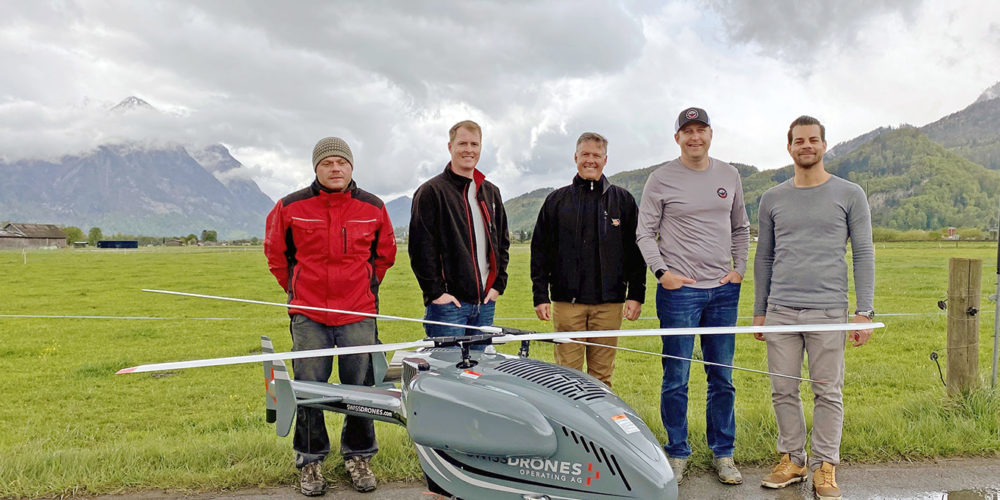In life, sometimes the stars align in ways you don’t expect. For Will Lovett (’91), this was the case in 2014. After working 20-plus years in aviation insurance and flying helicopters and fixed-wing aircraft for the U.S. Army Reserve, he was presented an opportunity to launch Phoenix Air Unmanned (PAU), an unmanned aircraft services startup for Phoenix Air Group.
He also found himself dealing with a personal tragedy that would reaffirm his decision.
Just as Lovett was transitioning to PAU, his close Army friend, Matt Wallace, died in a helicopter crash, while surveying utility transmission lines.
“It really prompted me to say, ‘Why can’t this be done with unmanned aircraft, so we don’t risk pilots’ and observers’ lives with the proximity to lines,’” Lovett says. “We can accomplish this with drones and be safer. And we can get more actionable intelligence. We can take drones closer to power lines, with high-resolution cameras, so they can actually tell specifically what’s broken or what needs attention.”
The chance to lead the vanguard of a largely untapped business sector and simultaneously prevent the unnecessary loss of life was an opportunity he couldn’t pass up.
“To start a new company or new division, and being employee No. 1, and building a company with no template whatsoever … I loved the challenge,” Lovett says.
Fast forward several years later and it’s clear that he was up to the challenge. Now, a proven leader in the commercial unmanned aircraft systems (UAS) space, Lovett is helping shape the future of beyond visual line-of-sight (BVLOS) operations.
As a member of the Federal Aviation Administration’s UAS BVLOS Aviation Rulemaking Committee (ARC), he is charged with designing regulations for BVLOS operations that are “safe, scalable, economically viable and environmentally advantageous.” The FAA Charter for the ARC prioritizes rulemaking for long-line linear infrastructure inspection, aerial data gathering, small package delivery and precision agriculture applications, such as crop spraying.
Unlocking the Potential of UAS
Lovett knows first-hand the need for BVLOS regulations for the industry. Roughly 80 percent of PAU business is linear infrastructure inspection and data collection on transmission lines. Aerial cinematography and surveying/mapping using LiDAR (light detection and ranging) are the company’s other primary business segments.
And while business is good, there is a world of upside ahead for this expanding sector, says Dent Thompson, senior vice president and chief operations officer for Phoenix Air Group. Thompson, who initially convinced Lovett to take the controls of PAU, sees a bright future for UAS services, with one important caveat. “The only thing holding back commercial operations for unmanned aircraft are regulations and the integration of unmanned systems into the existing controlled airspace,” he says.
Fortunately, with Lovett’s leadership, the FAA ARC is working diligently to create regulations that will streamline BVLOS operations. It’s a vital first step in releasing the vast potential of the UAS industry, Thompson says.
“Will Lovett and his co-members of the ARC and similar study groups are taking the initial steps towards an expanding universe of opportunities for unmanned aircraft,” Thompson says. “The future for unmanned aircraft is limitless.”
